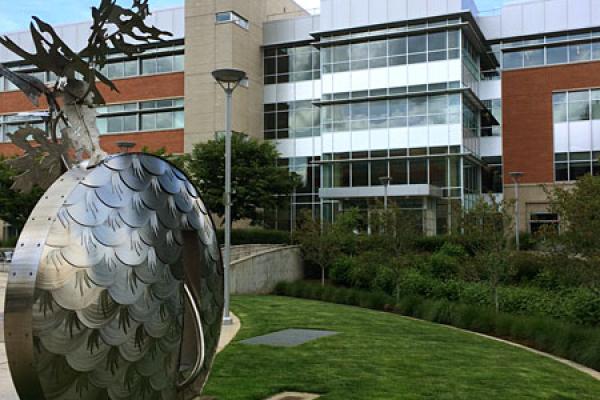Since May 2007, the State of Oregon has allowed school districts to impose a construction excise tax on projects that result in a new structure or additional square footage to an existing structure.
Clackamas County administers this tax for some cities and the unincorporated areas in the participating school districts in the County. The table below shows the assessment amounts for the school districts that have passed resolutions to implement this tax.
| School district | Residential rate (sq. ft.) | Non-residential rate (sq. ft.) | Exemptions |
|---|---|---|---|
| Canby 503-266-7861 | $1.67 | $0.84 | <1,000 sq. ft. |
| Centennial 503-760-7990 | 1.67 | 0.84 | Contact district |
| Estacada 503-630-6871 | 1.67 | 0.84 | |
| Gladstone 503-655-2777 | 1.26 | 0.63 | <500 sq. ft. |
| Gresham / Barlow 503-261-4550 | 1.00 | 0.50 | |
| Lake Oswego 503-534-2000 | 1.63 | 0.82 | |
| Molalla River 503-829-2359 | 1.35 | 0.50 | |
| Newberg 503-554-5000 | 1.67 | 0.84 | |
| North Clackamas 503-353-6000 | 1.63 | 0.82 | <1,000 sq. ft. |
| Oregon City 503-785-8000 | 1.63 | 0.82 | |
| Oregon Trail 503-668-5541 | 1.00 | 0.50 | <1,000 sq. ft. |
| Riverdale 503-262-4840 | 1.00 | 0.50 | |
| Sherwood 503-217-5365 | 1.67 | 0.84 | |
| Silver Falls 503-873-5303 | 1.00 | 0.50 | Contact district |
| Tigard-Tualatin 503-431-4000 | 1.67 | 0.84 | |
| West Linn/Wilsonville 503-673-7000 | 1.56 | 0.78 | |
| *Should your project change, resulting in lower fees, you may request refunds through the school district. | |||
How tax rates are determined
SB 1036 set initial tax rate limits, and beginning in 2009, tax rates were indexed to inflation using the Engineering News-Record Construction Cost Index. As prescribed in statute, the Department of Revenue is responsible for updating tax rate limits and notifying affected districts.
| Fiscal year | Residential** | Non-residential** | Non-residential max |
|---|---|---|---|
| 2019-20 | $1.35 | $0.67 | $33,700 |
| 2020-21 | 1.39 | 0.69 | 34,600 |
| 2021-22 | 1.41 | 0.70 | 35,200 |
| 2022-23 | 1.45 | 0.72 | 36,100 |
| 2023-24 | 1.56 | 0.78 | 39,100 |
| 2024-25 | 1.63 | 0.82 | 40,800 |
| 2025-26 | 1.67 | 0.84 | 42,400 |
| **Dollars per square foot | |||
Before a school district can pass a resolution implementing these taxes, it must develop a long-term facilities plan for making capital improvements. The plan is adopted by resolution and the expenditure of the money collected is restricted. ‘Capital improvements’ can include:
- Land acquisition
- The construction, reconstruction or improvement of school facilities
- The acquisition or installation of equipment, furnishings or other tangible property
- The cost for architectural, engineering, legal or similar costs related to capital improvements
- Assets that have a useful life of more than one year
- Payment of obligations and related costs that are issued to finance/re-finance capital improvements
Residential
- The construction tax may not exceed the rate set by the Department of Revenue, as outlined in ORS320.176, and approved by the local school district.
- The excise tax is not assessed on garage or porch areas; the tax is assessed per square foot on structures or portions of structures intended for residential use.
- Replacement dwellings may receive credit for existing square footage on record with the county tax assessor.
Commercial
- The construction tax may not exceed the rate set by the Department of Revenue, as outlined in ORS320.176, and approved by the local school district.
- The tax imposed on structures intended for non-residential use may not exceed maximum amount allowed per square footage.
- Replacement structures may receive credit for existing square footage on record with the county tax assessor.
Additional exemptions
These construction taxes may not be imposed on the following:
- Private school improvements
- Public improvements as defined in ORS 279A.010(cc);
- “Public improvement” means a project for construction, reconstruction or major renovation on real property by or for a contracting agency.
- “Public improvement” does not include certain exempted projects, emergency work and alterations. (Please refer to the ORS for the full definition.)
- Residential housing that is guaranteed to be affordable, under guidelines established by the US Department of Housing and Urban Development, to households that earn no more than 80 percent of the median household income for the area in which the tax is imposed, for a period of at least 60 years following the date of construction of the housing;
- Public or private hospital improvements;
- Improvements to religious facilities primarily used for worship or education associated with worship;
- Agricultural buildings, as defined in ORS 455.315(2)(a);
- Facilities that are operated by a not-for-profit corporation and that are:
- Long term care facilities, as defined in ORS 442.015;
- Residential care facilities, as defined in ORS 443.400; or
- Continuing care requirement communities, as defined in ORS 101.020 [2007c.829 3;209 c.534 2]
If a person believes they are exempt from the tax, they must contact the appropriate school district, which may grant the exemption if it appears to be valid under the district's resolution. A permit will not be released until the exemption is approved or the excise tax has been paid in full.
This webpage only provides a basic outline of the restrictions and guidelines for applying the School District Excise Tax. Each jurisdiction has the option to make minor modifications to the guidelines given in the executed Senate Bill. For complete overview of the Senate Bill, please review the full text version on the Oregon State website.
 Translate
Translate







